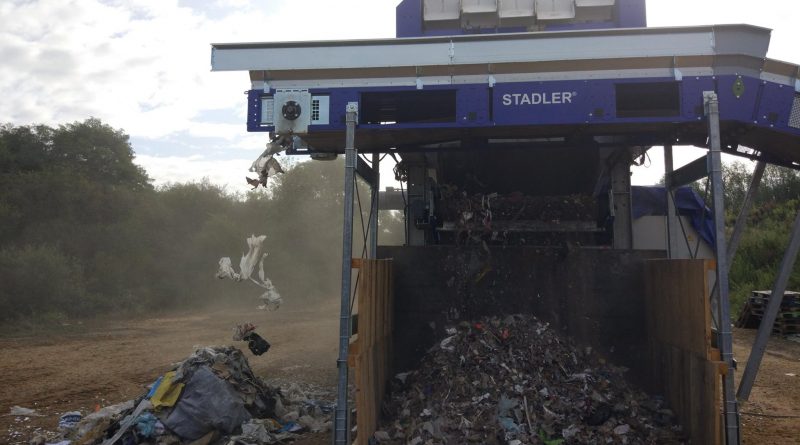EU-funded landfill mining New-Mine research project
Enhanced Landfill Mining (ELFM) has the potential of providing a solution that could reduce future remediation costs and reclaim valuable land while unlocking precious resources. The four-year New-Mine research project, led by KU Leuven Institute for Sustainable Metals and Minerals SIM2, was launched in 2016 to look into different aspects of Enhanced Landfill Mining. Its aim is to develop and integrate cutting-edge, eco-friendly ELFM technologies to valorise Europe’s landfills, recovering resources such as materials, energy and land, while mitigating future environmental and health risks and avoiding significant remediation costs.
Dr. Lieven Machiels, Science & Technology Coordinator of the project at the KU Leuven Institute for Sustainable Metals and Minerals, explains: “We consider Enhanced Landfill Mining the missing link to a Circular Economy. The Circular Economy Action Plan of the European Green deal focuses on a “sustainable products” policy that prioritizes reducing and reusing materials before actually recycling them, moving up the Waste Hierarchy. Nevertheless, what is not yet addressed is the question of what Europe and other countries in the world will do with the vast amounts of industrial and consumer waste that have been disposed of in waste dumps and landfills over the past 100 years. In this context, ELFM has been proposed as an out-of-the-box approach to address how we can deal with the waste of the past, irrespective of the urgent need to avoid new waste creation and disposal in the future.”
The project has received funding from the European Union’s EU Framework Programme for Research and Innovation Horizon 2020 and involves eight European universities as well as sorting systems manufacturer Stadler and other companies from the private sector.
Dr. Lieven Machiels explains: “In classic Landfill Mining, the focus is on reducing the volume of waste, for example through incineration and the recovery of land, while the production of recyclates is in general limited. In the NEW-MINE project, we followed an ELFM approach aiming at a maximal recovery of resources. Instead of burning the light fraction, we produce a Refuse Derived Fuel (RDF), which is thermally converted to produce a synthetic gas and a vitrified residue. The syngas can be further upcycled to produce methane or hydrogen, while the vitrified residue can be used for producing cement and construction materials.”
Mechanical processing technologies to recover resources from waste
RWTH Aachen University, one of the project’s partners, invited Stadler to participate, contributing its expertise and equipment. The company played an important role in the first work package, dedicated to mechanical processing. The main goal was to identify ways of improving the quality of the fractions in order to produce RDF, which has a variety of applications. Another important goal was to research uses for fine fraction, which accounts for more than 50% of the waste in landfill mining, and currently has no utilisation. The project showed that further mechanical separation of fine fraction can produce sand for use as an aggregate in the construction sector. The light fraction can also be used in a thermo-valorization process.
The theoretical research on mechanical processing was tested in real conditions in the Mont-Saint-Guibert landfill in Belgium. The landfill waste was excavated and processed.
Dr. Cristina Garcia Lopez, one of the New-Mine project´s researchers, states: “Since the landfill waste is a very complex and heterogeneous material due to the amount of impurities, the ballistic separator provided us the opportunity of dosing the unsorted and unshredded excavated waste into three different material flows: potential RDF, 3D fraction and fines. It also allowed us to sort the landfill waste in its original size without shredding, avoiding the loss of small particles in the fine fraction – which required fewer steps. Besides, the great infeed of the ballistic STT 6000 (150t/h, depending on the density of the material), made it quite interesting since the amount of waste buried in landfills is considerably high while the general mechanical processing capacity is really low compared to the excavation capacity.”
Landfills present a particular challenge, as Dr. Lieven Machiels explains: “The level of moisture of landfilled waste is much higher than in fresh waste, and the waste is strongly degraded. Work package 1 analysed how this material behaves in all steps of the mechanical separation process and what the properties are of the different output fractions. This research was new, and therefore its results are important for the future of landfill mining.”
Another significant challenge in the project was the fact that the excavated waste had to be processed on site, so the Ballistic Separator had to be installed on a temporary concrete foundation in the landfill. The Stadler Ballistic Separator has overcome all the challenges, showing that it can perform in these difficult conditions and confirming the feasibility of the project: “The high moisture value of the material was very challenging because the input was composed of pieces of rock and lumps of earth of up to 100 kg,” says Ulrich Sigmund.
The NEW-MINE project has received funding from the European Union’s Horizon 2020 research and innovation programme under the Marie Skłodowska-Curie grant agreement No 721185. Project website: http://new-mine.eu/

